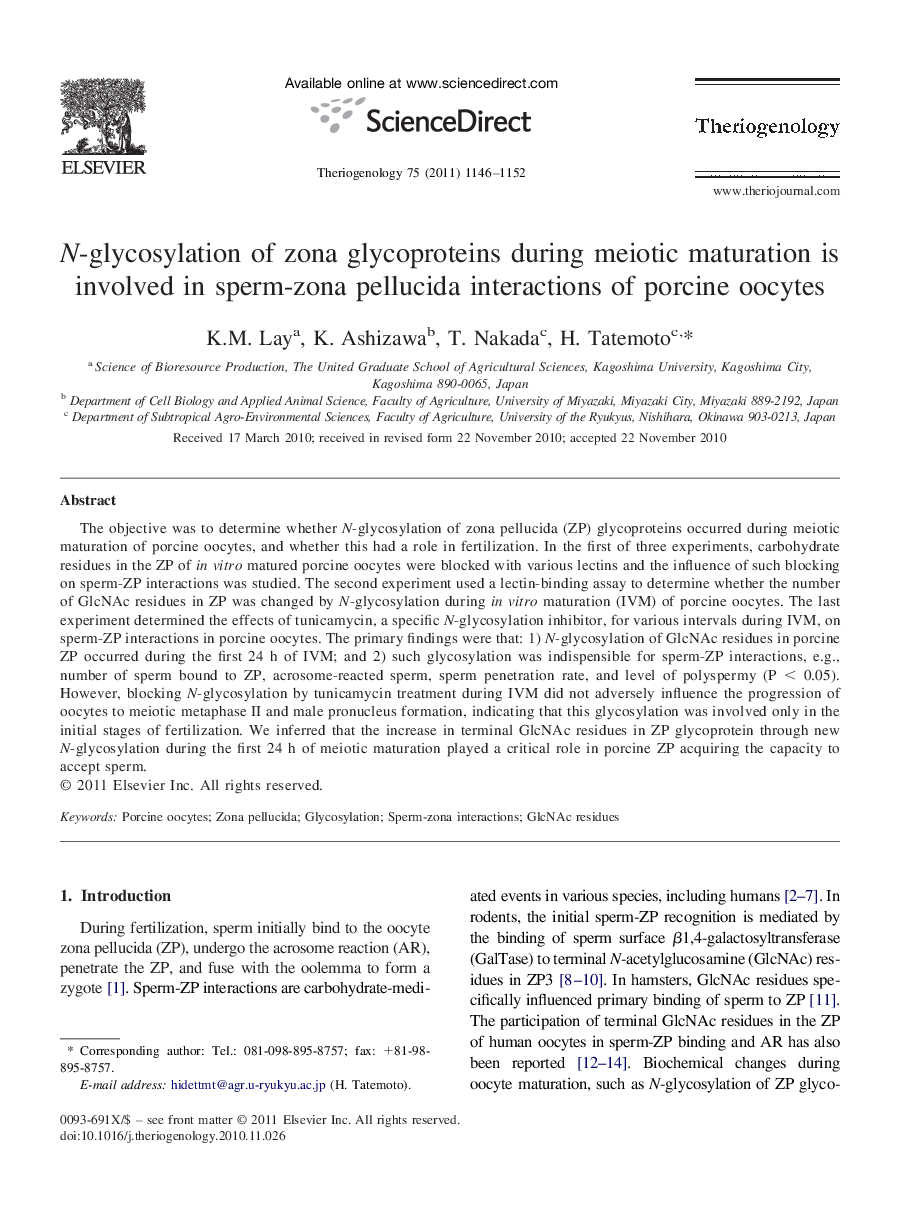| Article ID | Journal | Published Year | Pages | File Type |
|---|---|---|---|---|
| 10893130 | Theriogenology | 2011 | 7 Pages |
Abstract
The objective was to determine whether N-glycosylation of zona pellucida (ZP) glycoproteins occurred during meiotic maturation of porcine oocytes, and whether this had a role in fertilization. In the first of three experiments, carbohydrate residues in the ZP of in vitro matured porcine oocytes were blocked with various lectins and the influence of such blocking on sperm-ZP interactions was studied. The second experiment used a lectin-binding assay to determine whether the number of GlcNAc residues in ZP was changed by N-glycosylation during in vitro maturation (IVM) of porcine oocytes. The last experiment determined the effects of tunicamycin, a specific N-glycosylation inhibitor, for various intervals during IVM, on sperm-ZP interactions in porcine oocytes. The primary findings were that: 1) N-glycosylation of GlcNAc residues in porcine ZP occurred during the first 24 h of IVM; and 2) such glycosylation was indispensible for sperm-ZP interactions, e.g., number of sperm bound to ZP, acrosome-reacted sperm, sperm penetration rate, and level of polyspermy (P < 0.05). However, blocking N-glycosylation by tunicamycin treatment during IVM did not adversely influence the progression of oocytes to meiotic metaphase II and male pronucleus formation, indicating that this glycosylation was involved only in the initial stages of fertilization. We inferred that the increase in terminal GlcNAc residues in ZP glycoprotein through new N-glycosylation during the first 24 h of meiotic maturation played a critical role in porcine ZP acquiring the capacity to accept sperm.
Related Topics
Life Sciences
Agricultural and Biological Sciences
Animal Science and Zoology
Authors
K.M. Lay, K. Ashizawa, T. Nakada, H. Tatemoto,
